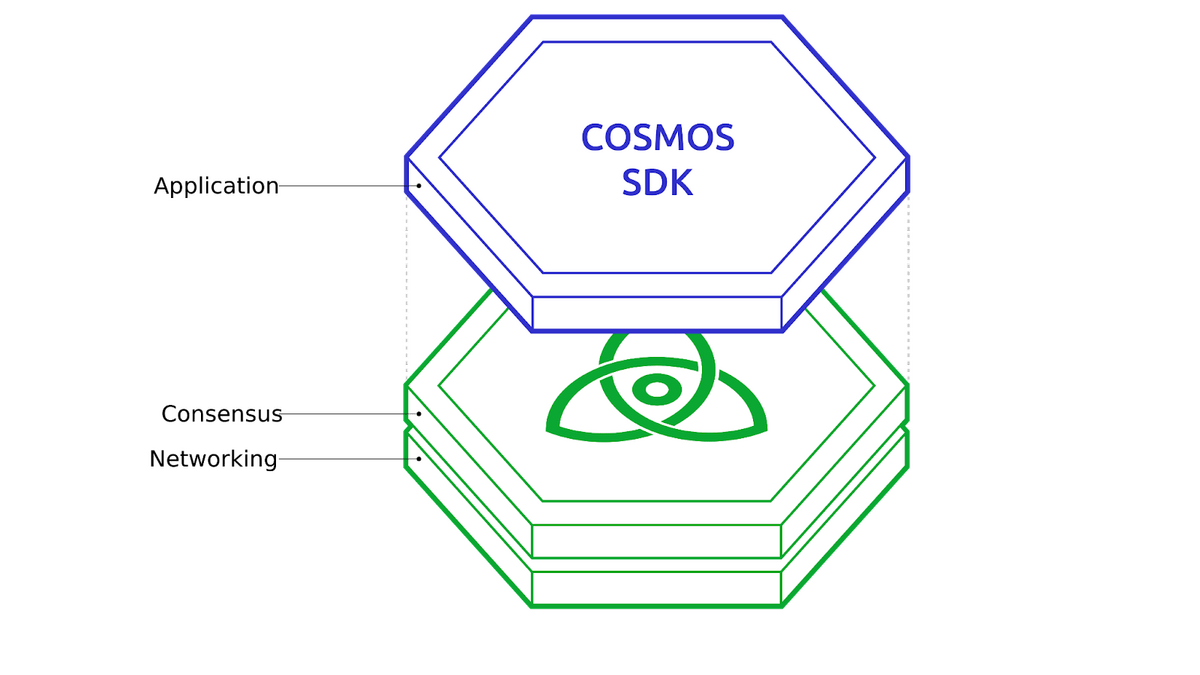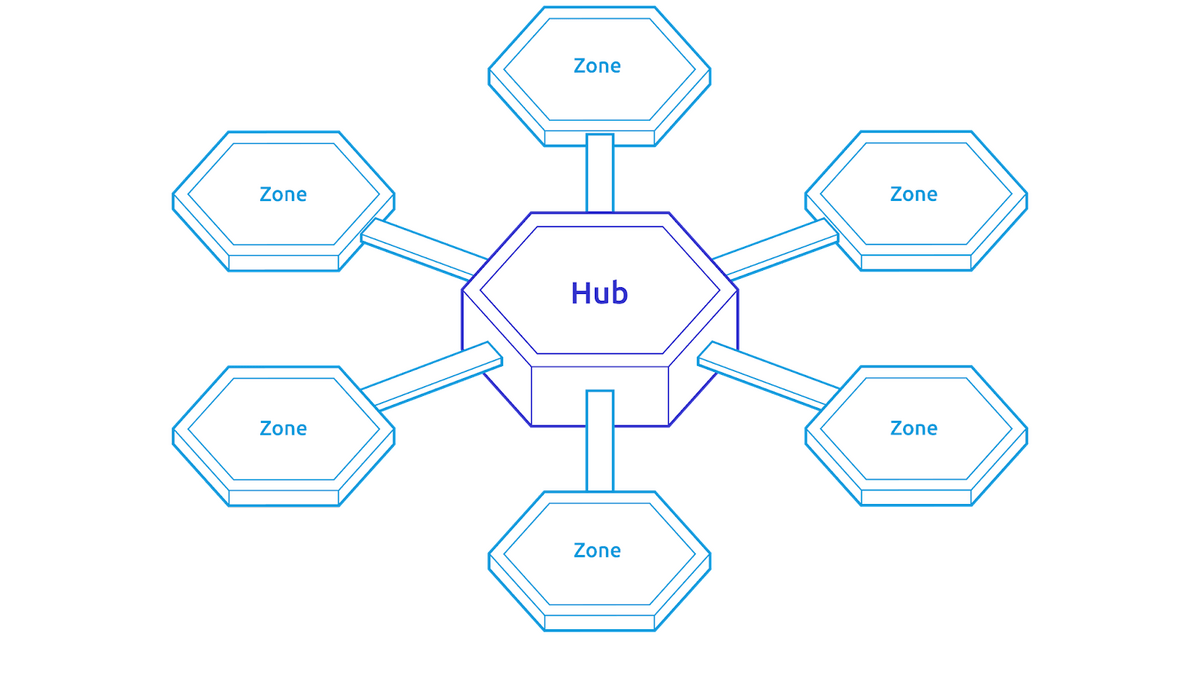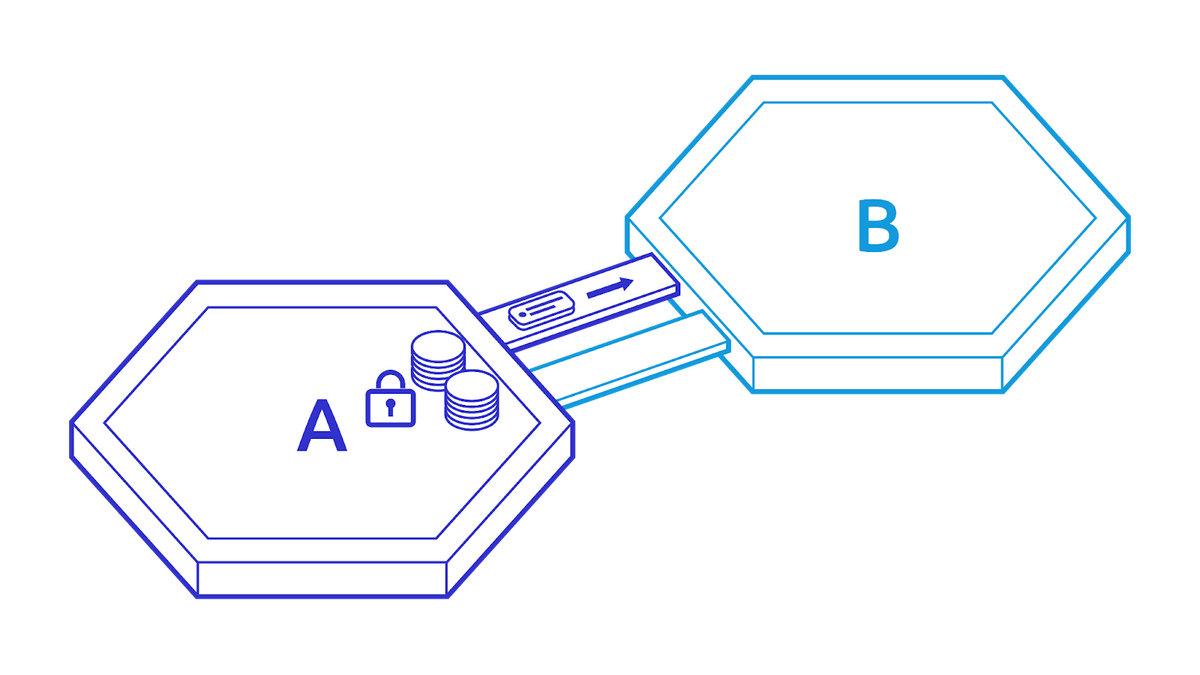Cosmos (ATOM): What if All Blockchains Could Communicate?

Cosmos has become synonymous with the idea of interoperability in the crypto space.
In an industry increasingly dominated by siloed projects either serving the same purpose with different selling points or offering unique services, Cosmos separates itself by focusing on connecting each project.
Touted as the “Internet of Blockchains” by its founders, the project promises to allow seamless communication between independent blockchain projects.
What is Cosmos (ATOM)? Why do we need an internet of blockchains, and how does it compare to other solutions?
What Is Cosmos (ATOM)?
Cosmos is a growing network of independent blockchains that can share data and assets in a decentralized manner.
The ecosystem connects popular projects like Binance’s BNB chain, Crypto.com’s Cronos, and the Terra Classic network.
Unlike other Layer-1 networks like Ethereum, which play host to multiple applications on a single layer, Cosmos provides these applications with the tools to build their own sovereign blockchains that are interoperable with the rest of the ecosystem.
The benefits of interoperability and sovereignty include increased flexibility, scalability, and security. Cosmos (ATOM) enables developers to create more complex applications and services by allowing different blockchains to work together. Each blockchain’s sovereignty also ensures no single point of failure in the network, making it more secure and resilient.
How Cosmos Enables Developers to Build Application-Specific Blockchains
Cosmos offers developers several tools to streamline the process of creating blockchains for specific applications. These tools include:
Tendermint Core – Tendermint Core is the open-source software that secures the Cosmos ecosystem. The software runs on a proof-of-stake consensus algorithm, requiring nodes to stake the native crypto asset to validate transactions on the network.
Tendermint’s PoS algorithm is Byzantine Fault-tolerant (BFT), allowing for continued operations even if 33% of the nodes fail.
While it is the default consensus model for Cosmos blockchains, other consensus models can also be used.
Application BlockChain Interface (ACBI) – Unlike other blockchains, Cosmos separates its application layer from its consensus layer. The application layer is where developers create decentralized apps (DApps). The application layer on the Cosmos network is called the Application BlockChain Interface (ACBI).
The separation of the application layer from the consensus and networking layers allows developers the freedom to develop sovereign and application-specific blockchains. In contrast, on blockchains like Ethereum, developers can not separate their applications from the Ethereum mainnet.

Source: Cosmos Network
The Cosmos SDK – Cosmos offers developers a software development kit (SDK) to make building blockchains on the application layer easier. With the open-source SDK, developers significantly save time and cost.
Why Is the Interoperability Offered by Cosmos Important?
The Web3 space is booming with multiple blockchains and blockchain layers. This rapid growth of different blockchain ecosystems comes from the desire to optimize for other use cases. For example, projects focused on gaming might desire more smart contracts and throughput capabilities than those focused on payments.
As the ecosystem becomes more varied, it becomes necessary for these separate blockchains with unique offerings to interoperate. This interoperability is particularly important for developing cross-chain applications and institutions looking to interact with multiple on-chain solutions. The problem, however, is that most blockchains lack inbuilt communication capabilities.
While there have been attempts to solve this problem with things like swaps and bridges, these solutions have left much to be desired, posing a vulnerability in many instances. Cosmos proposes a unique solution to this problem.
How Does Cosmos Work?
Cosmos employs what it calls a hub and zone model. This design enables blockchains to maintain their sovereignty while enjoying the network’s interoperability.
Zones – A zone is an independent blockchain within the Cosmos network. Zones are sometimes referred to as application-specific blockchains.
Hubs – A hub is a blockchain that connects zones acting as a communication layer. The Cosmos Hub was the first blockchain in the Cosmos network and the first hub. Hubs are notably connected to Zones through Inter-Blockchain Communication channels.

Source: Cosmos Network
Inter-Blockchain Communication (IBC) Protocol – The inter-blockchain communication protocol is the technology that makes communication between blockchains in the Cosmos network possible. IBC acts as a channel allowing the flow of data and tokens.

Source: Cosmos Network
It is worth noting that there are also special blockchains that allow the Cosmos ecosystem to connect with external networks called peg zones. Cosmos developers are notably working on peg zones for Bitcoin and Ethereum.
What Role Does ATOM Play in the Cosmos Network?
ATOM is the native token of the Cosmos Hub and the broader ecosystem’s primary token.
On the Cosmos Hub, ATOM is primarily used for staking and governance. At the same time, the cryptocurrency is key to the broader network’s interoperability due to its availability on central exchanges.
ATOM’s role in the Cosmos ecosystem allows the asset to grow more valuable with each zone that joins the ecosystem. It is, however, worth noting that there is no limit to how many ATOM tokens can be created as new ATOMs are minted to reward validators.
Cosmos History & Founders
Computer scientists Jae Kwon and Ethan Buchman founded Cosmos in 2014 with help from a Swiss blockchain-focused research and development company called the Interchain Foundation (ICF). Kwon and Buchman released the Cosmos white paper in 2016.
ICF held a two-week initial coin offering (ICO) for ATOM in 2017, raising $17 million in several rounds of funding led by Paradigm.
Developers raised another $9 million in funding to continue development in 2019, announcing the news a day after releasing Cosmos Hub.
Cosmos is notably not the only crypto project that has emphasized interoperability. Polkadot, another project that has staked its identity on interoperability, has often drawn comparisons with Cosmos. The same is true with Chainlink.
Cosmos v. Polkadot
While Polkadot’s parachains appear similar to Cosmos’ zones, both ecosystems have different governance and token transfer approaches.
Cosmos allows each zone to have separate governance and validator structures. Polkadot parachains, on the other hand, share the same validator set.
At the same time, while zones can easily transfer tokens and data via IBC, parachains require smart contracts to transfer tokens and data, making them more vulnerable to exploits.
Cosmos v. Chainlink
Cosmos and Chainlink are blockchains focused on interoperability. However, they have different goals and approaches.
While Cosmos aims to create a network of independent blockchains, Chainlink is built to connect smart contracts on different blockchains to real-world data. Cosmos uses IBC, while Chainlink works with decentralized oracles.
Cosmos and Chainlink have significantly different use cases as a result. While the former can be leveraged in decentralized finance (DeFi), gaming, and supply chain management, the latter primarily provides secure price feeds.
Pros and Cons of Cosmos (ATOM)
The Cosmos network most certainly has a lot of promise, but this innovation is not without its drawbacks.
Pros
- Interoperability – Cosmos (ATOM) enables communication and data exchange between different blockchains, creating a network of interconnected blockchains.
- Sovereignty – Each blockchain in the Cosmos network is independent and can have its own set of rules and governance structures, ensuring no single point of failure in the network.
- Scalability – Cosmos (ATOM) is highly scalable, with the ability to process thousands of transactions per second.
- Customization – Developers can customize their blockchains in the Cosmos network to meet their specific needs and requirements.
- Security – The Cosmos network is highly secure, with a robust consensus mechanism.
Cons
- Complexity – The Cosmos ecosystem is complex and can be difficult for non-technical users to understand.
- Competition – There are other projects in the blockchain interoperability space, such as Polkadot are also competing for market share.
- Volatility – The cryptocurrency market is highly volatile, and the value of ATOM can fluctuate rapidly.
- Adoption – The success of Cosmos (ATOM) depends on the adoption of the network by developers and businesses, which is not guaranteed.
- Regulation – The regulatory environment for cryptocurrencies and blockchain technology is still evolving, which could impact the future of the Cosmos network.
On the Flipside
- Despite its advantages, Cosmos has fallen in popularity compared to competitors like Chainlink and Polkadot.
- Peg zones connecting Cosmos to popular projects like Bitcoin and Ethereum are yet to roll out.
Why This Matters
New blockchain projects spring up nearly every day, offering unique perks to users. However, if Web3 is to become more than just a buzzword heralded by crypto enthusiasts, then these different networks need to be able to communicate. This need for interoperability makes solutions like Cosmos critical to the vision of Web3.






 Bitcoin
Bitcoin  Ethereum
Ethereum  Tether
Tether  USDC
USDC  TRON
TRON  Dogecoin
Dogecoin  Cardano
Cardano  Bitcoin Cash
Bitcoin Cash  Chainlink
Chainlink  LEO Token
LEO Token  Stellar
Stellar  Monero
Monero  Litecoin
Litecoin  Hedera
Hedera  Zcash
Zcash  Dai
Dai  Cronos
Cronos  OKB
OKB  Tether Gold
Tether Gold  Ethereum Classic
Ethereum Classic  KuCoin
KuCoin  Gate
Gate  Algorand
Algorand  VeChain
VeChain  Cosmos Hub
Cosmos Hub  Dash
Dash  Stacks
Stacks  Tezos
Tezos  TrueUSD
TrueUSD  IOTA
IOTA  Basic Attention
Basic Attention  Decred
Decred  Theta Network
Theta Network  NEO
NEO  Synthetix
Synthetix  Qtum
Qtum  Ravencoin
Ravencoin  0x Protocol
0x Protocol  DigiByte
DigiByte  Zilliqa
Zilliqa  Nano
Nano  Siacoin
Siacoin  Holo
Holo  Numeraire
Numeraire  Waves
Waves  Ontology
Ontology  Enjin Coin
Enjin Coin  Status
Status  Pax Dollar
Pax Dollar  BUSD
BUSD  Hive
Hive  Lisk
Lisk  Steem
Steem  Huobi
Huobi  NEM
NEM  OMG Network
OMG Network  Augur
Augur  Bitcoin Gold
Bitcoin Gold  Ren
Ren  HUSD
HUSD